The nuclear crisis unfolding between the United States and North Korea should not be considered only a bilateral confrontation between two hotheads with the fatal intention of pushing the red button of no return not only for the two nations but also for the entire human kind. It must be analyzed and assessed as also an open confrontation between Washington’s aggressive foreign policies and the more subtle cooling diplomatic stance of Beijing and, in a wider aspect, as the new claim for global policing that Donald Trump is presenting to the whole geo-political global chessboard.
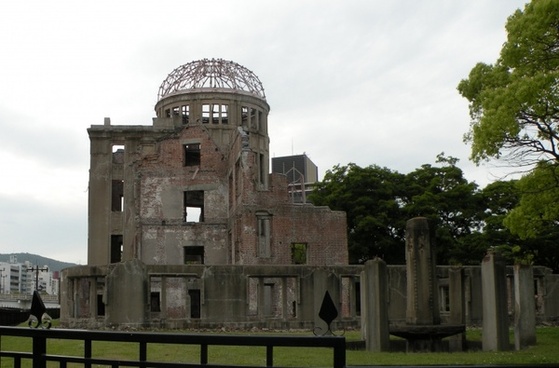
United States and North Korea are already in the boxing ring and ready to warm up their muscles and, if they start crossing their gloves like mad boxers then the entire world will be at a point of no return because inside the ring there will be no referee and, at the side, no judges able to decide the winner. And even a draw will be an apocalyptic doomsday and, maybe, causing the existence of human race.
The general opinion of world’s leaders, strategists, diplomats and military experts is that it is not only an unprecedented crisis but the scenario at hand is much more dramatic and fragile than the nuclear confrontation in the early 1960s between United States and USSR with the Cuban crisis. The reason is that crisis was at the beginning of the nuclearization of the military systems and there were very few countries with more or less developed technological knowledge and scientific research able to start a devastating conflict.
Today’s nuclear crisis is completely destabilizing and unprecedented due to he fact that all the countries, directly or indirectly, potentially involved or interested by the crisis are all in possession of nuclear military systems and arsenals of mass destruction. All these countries, namely China, Russia, EU, are conducting their best efforts in order to avoid a war that could be catastrophic not only for the lives of millions of people but also for the future of diplomacy,
Among the most authoritative and knowledgeable analysts and experts of international crisis, Henry Kissinger seems standing above the others for the lucidity and straight-forwardness used in defining the crisis and assessing the possible consequences deriving from a complete failure of diplomacy and efforts aimed at re-establishing a more reasonable dialogue and communication amongst all the players.
In a recent editorial published by the Wall Street Journal, Henry Kissinger, known for his very acute and precise ability to envision the possible scenario based on his diplomatic experience of more than half century, expressed his opinion, his doubts and his hopes on how to solve the crisis between the United States and North Korea to avoid the almost unavoidable conflict.
The reason needed to understand and pay careful attention to Kissinger is not due only to the enormous experience and importance of Kissinger and his unique constant presence in the history of the United Staes in the last 50-60 years; but also because he has assumed a delicate role of linking pin for the relations between the White House and the leadership of Beijing. It must suffice to mention that that while Trump was phoning in Taiwan and spoke of Chinese export duties, Kissinger flew to China to speak to the leader Xi Jinping, almost wanting to show that the direct channel between China and the United States was not going to stop. And no one better than Kissinger could prove it, because it was he, at the time of Nixon, to open up to the first official meeting between Mao’s China and the United States.
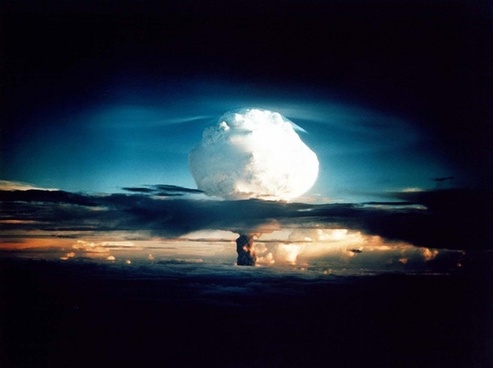
According to the mastermind of the foreign policies and diplomacy of the White House in the last six decades, any military solution is not only to be avoided but it must not be even taken in consideration even though all the diplomatic efforts seem fruitless. The reason is that there are enormous risks and immediate consequences affecting the whole Korean peninsula. As matter of fact, Pyongyang holds Seoul hostage and under the aim with its weapons and can cause enormous damage to South Korea, even considering the immediate retaliation of Seoul.
When Mr. Donald Trump advances the hypothesis of the concept of “Preventive Strike”, there is a misconception or an over-estimation from the US military strategists of the real effectiveness of such strike and the actual implementation of the military plan. The term is very illusory but also extremely pretentious in nature and deep meaning. It should be read as assumption of open war or official declaration of war. Whoever attacks first is the initiator of a conflict not the receiving end and neither can claim the right of self defense. It is not a well played card to start the hostilities and then claim that such action has been initiated on the principle of self defense in case an attack could be probably coming from the possible enemy. Until now, there is no enemy of war but diplomatically hostile countries accusing each other of political violation and military intimidation (North Korea vs United States) and unconventional and unacceptable proliferation of nuclear military system (United States vs North Korea).
In case of American preventive strike, Beijing, given her role of leadership and superpower in the Asian region, supported by the Chinese state press and the always undying support of all the Chinese masses, could intervene in favor of North Korea or, in any case, to oppose any military attach of the US in the area. And the reason is very simple. China cannot and will not accept the US unilaterally decide the fate of their troubled and troubling neighboring country. Furthermore, there could be more ripple effects of belligerence investing the entire region and causing a unthinkable fall-out of everyone against everyone.
Donald Trump and his strategists are trying to place China under enormous trade and financial pressure in a diplomatic effort to push Pyongyang towards denuclearization, which is just an utopic goal or unrealistic request. However, China shares the American worries and fearful feelings toward the nuclearization of North Korea, because it will be the first country suffering the consequences of any nuclear conflict both for various reasons like maintaining its international stability as emerging leading economic superpower, for the maintenance of the prosperous growth of the internal economic development and because China wishes no war with any countries especially with the US.
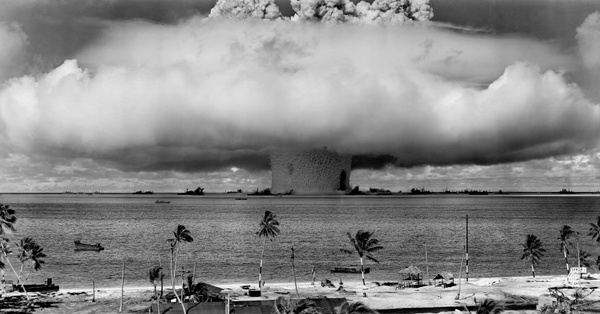
China has acquired an unequable supremacy as financial and trading partner, promoter and supporter through huge and immense direct investment in foreign countries, helping and aiding the development of other developing and under-developed countries, mastering the creation of BRICS, the foundation of the ASEAN bank, the planning and implementation of the Silk Road initiative. All these and other ventures promoted by China are of vital importance for the establishment of a more equal balance of power distribution in the world. Maybe the nuclear crisis should be an excuse of the US for trying to undermine the seemingly unstoppable growth of the Asian economic tigers considered causes and effects of the underperforming US economy.
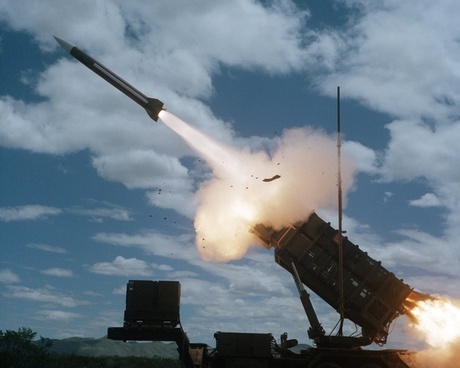
It must be remembered that the only time the US economy has recorded strong economic growth and expansion cycles has been only during period of heightened political crisis or direct involvement of military invasion of other countries through the false pretest of spreading false ideas of freedom and democracy.
However, China is very much aware, as well as other independent nations, that the US are not really sure yet about wanting to hit the Korean nuclear threat but China knows as well that the consequences, are not and canot be just limited to military confrontation but also to politcial consequences deriving from the possible overthrowin of the North Korean regime in case of defeat and the possibility of th establishment of a puppet government in Pyongyang acting in state of servilism to the White House.
Pyongyang has cut a role for itself in the International scenario as a crazy splinter or a vagant landmine ready to explode without any advanced notice. It is possible to argue, and maybe rightly so, on the extreme despotic regime of Pyongyang and the state of poverty and deprivation North Korean people are suffering because of the huge investments of funds into the nuclearization program have left the real economy of the country in a state of despair, awkwardness, under-development and delays which are quite a staggering contrast with the efficiency and progress of the military prowess of the nation.
China is left with understanding that the prospect of disintegration or chaos in North Korea evokes, in fact, at least two main concerns in China: the first with regard to the political and social effects of a North Korean internal crisis on China itself; the second regard to the security of all Northeast Asia
According to Kissinger, if the real aim of the US is the denuclearization of North Korea then the White House needs China in absolute terms because, while China is also not interest in the nuclear proliferation of North Korea, it is, however, very much concerned about the stability of political and hegemonic power in the Far East. The United States cannot negotiate on its own with North Korea, because the parties have become stiff and because Beijing has such a fundamental role that it would be impossible to avoid it as an interlocutor.
What, maybe, does contribute in making the US so confident in the way they are handling the crisis is the hypothesis of counting on a series of secondary regional allies, but that, in the case of war, could prove to be fundamental in the military chessboard.
The Philippines of Rodrigo Duterte, despite being often in diplomatic war with the United States, are however a territory linked to the military strategy of Washington, so that the Pentagon can count on five naval bases. The internal war against radical Islamism in Mindanao and the support offered by the United States seems to be the prelude to a renewed collaboration between Trump and Duterte, especially in anti-Chinese key. The Philippines, along with Thailand, Singapore and Vietnam – which in 2018 will host American carriers – represent the second row of the United States ‘ attack forces in the Far East. Bases that, more than in the case of war with North Korea, seem to be the prelude to a far more serious confrontation: the one with China.
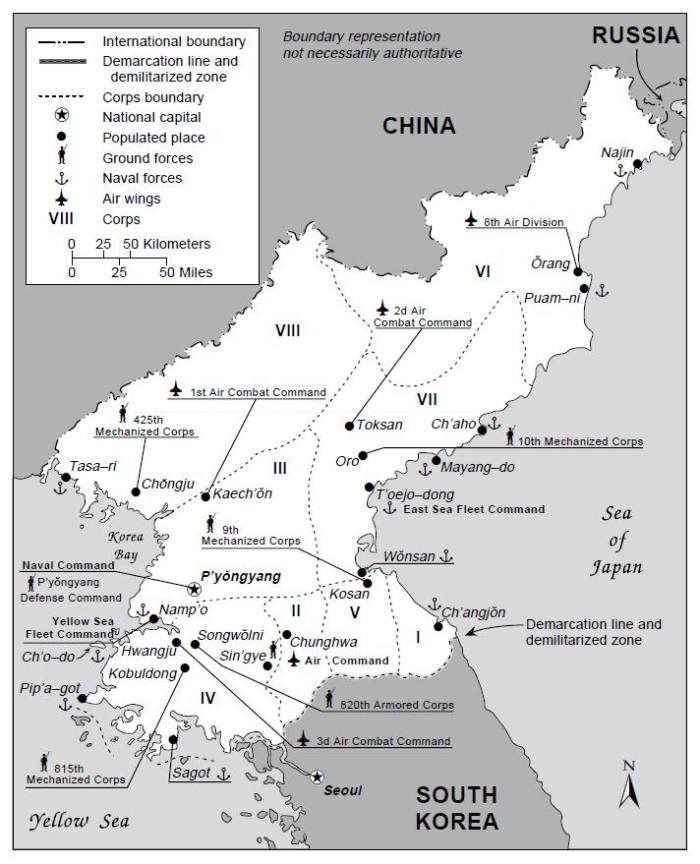
One thing is absolutely certain. The US cannot and will not let North Korea developing the atomic, because that would mean to decree the end of U.S. leadership in Northeast Asia, with far more reaching diplomatic consequences.
Japan and South Korea would feel disappointed and isolated or, in any case, abandoned and deprived of that political protection that allows them to live in peace, and could also develop their own strategy to enter into conflict with North Korea in the event of serious threats. And it is precisely this convergence of risks between China and the United States that, according to Kissinger, would be the only real reason that could help to avoid the conflict. Ever country involved in the crisis has something to lose and very little to gain in return from such a conflict.
But there are questions to be asked if North Korea is actual a real and powerful incoming threat to the US and its closest allies in the Far East? and how concrete if the military nuclear prowess of Pyongyang towards an almost unavoidable belligerent confrontation?

The entrance of North Korea into the club of Intercontinental Ballistic Missile Holders (ICBM) has been achieved with the latest test launch of its KN-20 missile which, according to many analysts, it would be able to carry a load of 600/650 kg and therefore have nuclear capacity. Is this enough to represent a threat? No. For the nuclear threat to be credible, in other words, to represent a deterrence, it is necessary that the “vehicles of return” of the missiles (the spinner that physically leads the head on the enemy ground called in the RV jargon) are able to survive the return to the atmosphere and to hit the target with due precision.
In addition to this it is necessary that the technology of the warheads is sufficiently advanced to allow the “miniaturization” of the same, or to build quite powerful devices for the same load capacity of the missile carrier. As it seems, especially by analyzing the American reactions, Pyongyang seems to have succeeded in reaching the ability to carry small heads of power (we talk about 15 Kton) on area targets (i.e. cities, ports, or large military installations) far from North Korean soil.

This capacity poses a threat to its own interests for Washington, having, for the first time, its mainland territory within the range of North Korean missiles. President Trump in the last hours has launched in invective against Kim Jong-UN: “It is better that North Korea will not further threaten the United States otherwise they will contend with the flames and a fury that the world has never seen before” and, for all response, Pyongyang has armed with anti-ship missiles some of its corvettes.
But what are the three possible scenarios which could potentially develop in case of US preventive attack? And what would the American attack consist of? Would it really be in a rain of nuclear missiles on North Korea? In fact, it is necessary to consider that there are different “nuances” before the atomic Armageddon. The firm point to consider is that the atomic arsenal of Pyongyang poses a threat that, in some way, Washington must eliminate. At least 3 different scenarios open.
The first possible scenario sees a targeted, surgical intervention, towards the heart of nuclear installations in North Korea. A submarine like the “Michigan” recently arrived in Korean waters and the escort of the Strike Group of the carrier Ronald Reagan, which, since May, is in the operations area of the VII fleet have enough Tomahawk missiles to be able to inflict serious damage to the reactors of Yongbyon and Taechon as well as secondary installations that serve to conduct tests and enrich uranium and those launch bases or known missile sites (Ongjin , Mayang-do and Wonsan for one some).
This scenario would be the softest because it would not involve the human factor in the attack, i.e. saving the Ronald Reagan bombers or ground base in South Korea, including the strategic bombers B-1b “Lancer” recently deployed in the peninsula. Obviously the Korean response would be there and would be limited to trying to hit the American targets: not only the Strike Group, but also those American bases in Japan or South Korea, probably sparing the military and civilian installations of the Allies. Counterattack that would have used the wide range of short and medium range missiles probably loaded only with conventional warheads, thus avoiding the use of the huge chemical arsenal for a possible attack of retaliation on inhabited centres in the event of escalation.
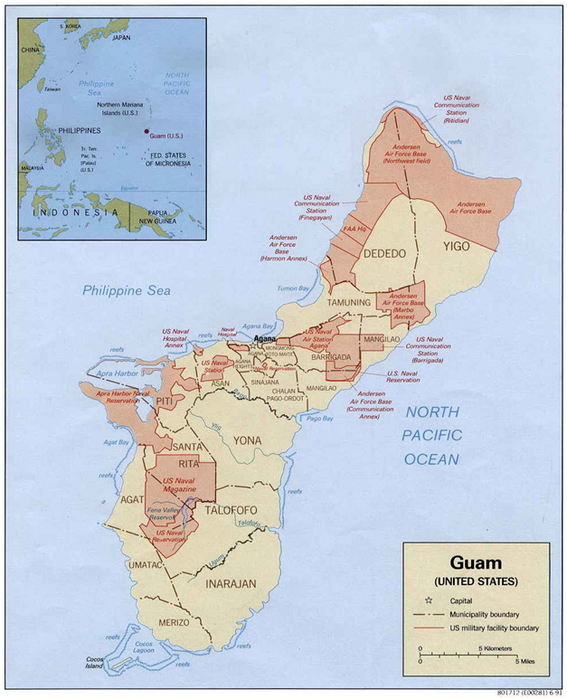
The second hypothetic scenario of intervention sees a more complex attack, aimed at damaging not only North Korean missile and nuclear installations, but also the military ones properly said. In this case it would take place with the help the fleet on the Ronald Reagan and the fighters and bombers based ashore in Korea and the support of the South Korean armed forces and the Japanese naval group that has already carried out escort cruises to the American Strike Group in the recent past.
The targets would therefore be, in addition to the reactors and missile bases, the concentrations of armored forces and all known storage sites of the North Korean mobile missiles as well as the storage sites of the chemical and biological warheads of Pyongyang (Aoji, Ongjin, Wonsan, Sunch ‘ on, Anju, Pyongsong etc. There are more than 50).
This scenario would lead to a reaction of Pyongyang that would probably employ not only its own conventional missile arsenal, but also the chemical and biological weapons on American bases, Japanese and South Korean targets, and almost surely you would have a retaliation attack, with the artillery, along the parallel 38th that would see also involved Seoul, which, we remember, lies within the range of the long-haul cannons and the North Korean artillery missiles being about 40 km from the border.
The THAAD, the ABM system (ballistic missiles) of the new American concept, it has also been deployed to remedy the threat of a possible attack of this type, while Japan currently has the Patriot system governed by the Aegis system which is present on the Destroyers (DDG) class Kongo and Atago class (Kongo improved).
The third and last scenario is that of a large-scale preventive attack, to put into practice the Oplan 5015 or a “decapitation strike” to bend once and for all North Korea and proceed to the unification of the peninsula. The attack would consist of “a preventive strike on the North’s core military facilities and weapons as well as its top leaders”. So the targets of this action, which would probably also be conducted with tactical nuclear weapons, would be the North Korean headquarters of the various armed forces, the Centers of Communication, command and control, and the missile launch bases known as well as of course to those bases where are concentrated most of the armored forces of Pyongyang crammed primarily behind the DMZ of the parallel 38th and protected in bunkers and armored tunnels. Chongju, Kaech ‘ on, Toksan, Kosan are just some of the names of the location locations of commands that would be affected.
To this type of attack would correspond a massive reaction by Pyongyang, a real war fought even with the use of the (hypothetical) 50 atomic warheads that would be directed to the major cities and military installations of South Korea, Japan and the United States as a retaliation attack: the low power of the devices and still the poor precision make it an instrument exclusively of this type, not being suitable for striking hardened and point targets such as ballistic missile silos or Armored bunkers.
A massive reaction which, most likely, would have also in case of success of the “decapitation” of headquarters. The risk, in fact, is given by the very nature of the armed forces and the Society of North Korea: the party has almost totally armed the population that has been framed in the popular militias, but above all the army, which consists of about 900 men, is strongly politicized and its leaders, even local, are well trained and perfectly integrated with the ideology of the government. This allows a local commander, in the absence of higher orders and in case of attack, to be able to assume greater responsibility despite the system is still strongly hierarchical: in case of emergency, every brigade, each division, is able to operate in watertight compartments and independently.
Therefore, strong of the military doctrine that believes that the United States and their allies need a significant time to deploy their invading forces, that would however after the first strike that essentially would be plane and missile, the North Korean generals would, as per programs, to an immediate attack with all available forces. A real invasion that would arrive immediately after a first attack made with special forces to upset the foundations of South Korea, thus acquiring the tactical initiative and forcing the US to use nuclear weapons to stop the advance and to prevent the Korean peninsula from falling in the hands of Pyongyang.
Invasion of the South will be built in 3 key steps all to perform within a week: 1. Conquer Seoul in the first 24 hours of the conflict, 2. Taejon in the first two days and all remaining South Korea within 7 days. 3. In the early stages the North Korean army, which thanks to the dispersion and the armored concentration sites would be able to limit the losses of an American preventive attack, it would be reversed in the South with 4 army divisions with the II Corps headed towards the capital south through the corridor “Kaesong-Munsan-Seoul” and taking it 24 hours from the beginning of the invasion.
These are the scenarios that could be painted in the event of an American preventive attack, but there are at least two unknowns: the first is that given by China, which, as mentioned above, sees the possibility of a reunification of the Korean peninsula under the flag of stars and strips as smoke in the eyes and a further threat to its interests towards the Sea of Japan and the South China Sea , and so he could decide, as he did in the past, to intervene militarily to support his uncomfortable ally; The second is given by the same North Korea that sees in its military doctrine the possibility of making in turn a preventive attack of “decapitation” and now that it has the tools could, driven by American threats, decide to attack first massively instead of waiting for the attack of USA and its allies.
The winds of war between the United States and North Korea do not seem to be heading towards easing away in a short time. For now everything suggests a war that will remain circumscribed, hopefully, on the ground of diplomacy. However, the increasing tensions between the two states and the harsh words of President Trump against the threats of North Korea reflect on the fact that for the first time, after years, the military solution no longer seems to be an unlikely possibility.
Trump has never ceased to consider a diplomatic solution, and the news on the constant communication channels between Washington and Pyongyang shows how both sides will not reach the extreme consequences of armed conflict. However, the fact remains that, at least formally, the President of the United States, commander in chief of the armed forces, never excludes, in any statement, the choice towards a preventive strike or bombing aimed to destroy the arsenal of Kim. And the latest Pentagon statements on the fact that American forces are already ready for an attack in the next few hours shows how the attack plan is not a remote assumption.
In case of conflict, the United States would have a formidable belt of fire from which to start the attacks. In the last few decades, the Pacific Ocean has become a sort of inner sea of Washington and its military bases have made it impossible to reach the shores of California without being affected before this happens.
Over the years, the Pentagon has built a formidable defense system that consists of tens of thousands of men deployed in the ocean islands and allied states, hundreds of naval means and some of the best missile systems in the world. The fact that the military leadership of North Korea has spotted on the island of Guam the potential target of the attacks is not accidental, but just demonstrating how fundamental these bases are for US policy in the Pacific Ocean. The island of Guam is popularly known as the “spearhead” of the United States: an island of just over 500 square kilometers, a third of which occupied by military infrastructures in which are hosted about 6 American soldiers. Dubbed by many as the “permanent carrier”, from here could start the B-52 headed to North Korea in case of attack order. Air Force which is further strengthened by the arrival of the Bombardier B1-B. From Pyongyang they believe that their missile can strike the base of Guam in about 18 minutes.
But there is not only Guam as the bastion of Americans in the Pacific Ocean. One of the other hinges on which the US attack force near the Korean coasts is certainly the Seventh Fleet. From the headquarters of Yokosuka, Japan, the Seventh Fleet, under the command of Vice-Admiral Joseph P. Aucoin, can count on about 70 between ships and submarines, 140 planes and about 20,000 sailors.
Further south of Yokosuka, and precisely in Sasebo, not far from Nagasaki, the fleet can also count on another base where many submarines and amphibious vehicles are deployed among the most modern ships supplied to the US fleet.
If therefore Guam can be considered the spearhead of the American forces in the Asiatic Seas, is Japan the true naval base of the United States near North Korea. Since the defeat in the Second World War, Japan has turned into a real American carrier in the Far East, so much so that at present they live on the Japanese territory about 40,000 soldiers of the US forces, and the country hosts 112 bases throughout the national territory.
Together with Japan, South Korea is inevitably the other great launching base from which to start attacks against the military stations of Pyongyang. Since the Korean War, the United States has never abandoned the southern part of the peninsula, making it the third largest area of the world with more military Americans after Germany and Japan.
The country hosts at least 20,000 permanent soldiers of the Pentagon plus hundreds of armored vehicles. In addition, in terms of defense in the event of the first missile attack by Pyongyang, South Korea is hosting the THAAD system. The newly installed anti-missile system from the United States represents the flagship of the technology proposed by Washington to defend itself from missiles from North Korea, but it is a system that has strongly divided the public opinion south, so that even the last elections were affected by the debate on the need of this system. Along with the Patriot and Aegis system, the THAAD for many is just a provocation, for others a necessity.
However, notwithstanding the US military prowess and nuclear supremacy, at least as technology and know-how are concerned, and the supposed readiness of North Korea to put up a stand against the eternal foe, there is always the key role of China that must be fully comprehended and appreciated in order to have a complete understanding of the nuclear crisis in the region.
Donald Trump knows perfectly that, in whatever ways, the crisis will be headed the role and approach of the political and diplomatic leadership of China in the region will always play the most crucial role in solving any possible scenario. China, during the last quarter of century, has grown from an under-developed country into the leading economic global super-power surpassing the US in terms of GDP and economic stability though recording, in the last decade, only a one-digit economic growth.
In any case, China has cut for itself an undisputed role of prima donna in the international chessboard and nothing moves unless Beijing is informed or takes the lead in ruling, managing and solving any sort of disputes. For examples, while the Western countries have openly condemned the expansionary policies of China in the South China Sea, even arguing the legality of territorial claims advanced by Beijing, China has activated the best of her soft hand diplomatic strategies and has been able to win the hearts and support of all the neighboring countries in solving any disputes amicably through understanding and sharing of Asian cultural values. The EU and the US have found enormous difficulties in understanding or, properly, comprehending how China has been successful in pulling out such unbreakable strings and political ties with most of the Asian neighbors in total disregard of the massive US military presence in the region.
Furthermore, the economic expansion of China characterized by the construction of cultural and friendship strong fundamental principles before the establishment of economic ties has, in a certain ways, caught by surprise the counter-maneuvers of the EU and US economists and financial lobbyist groups. One of the main characteristics of US economic influence and expansion in many areas of the globe is based on the subversion of the national government and the promotion of puppet leaders in order to control the primary and secondary resources in that countries. From South and Central America to the African continents and parts of the Asian and Middle East, the US have combined subversive and military occupational strategies to dictate their terms.
Beijing has adopted more pragmatic ways to win the hearts of economic allies through the implementation of soft diplomacy aimed at respecting and observing culture and historic differences and considering such differences as advantageous aspects of multiculturalism and multi-level collaboration on every aspects of international trade and partnership, including exchange of military technology and expertise.
The biggest mistake that the US could make is to under-estimate not only the new acquired political leadership of China in the strategic chessboard but, also, to play down the respect and trust Beijing is credited with by most of the Asian countries and even, Russia’s Putin. It is comprehensible that China will and does not welcome a nuclearized neighbor with unstable economy and unpredictable behavior. But, it is also, equally certain, that China does not see as a positive development an increasing US influence in the region, regardless of the ongoing nuclear crisis. Alongside China, other nations like Malaysia, Indonesia, partly the Philippines, Vietnam, India, Pakistan, and the ex-Soviet countries do not seem very enthusiastic in seeing an increasing presence of the US in the region. As such they might decide to provide more supportive contribution to the steps China might want to take towards a diplomatic solution of the nuclear crisis.
Economically, while Trump may in the short term play some financial and trading pressure on China, in the long term such strategy may play a boomerang effect on the US economy because China is not only the major exporting country in the world but also the biggest importer. Most of the countries’ economies base their sustenance of the stability of Chinese economy and the constant proliferation of the trading ties with Beijing. All these countries will certainly be ready to rally behind China and its leadership in solving the nuclear crisis and the US may find itself on the way of political and economic isolationism; something which Trump may not fully understand the gravity of its consequences.
Trump’s foreign policies have, insofar, showed to the world a kind of erratic behavior of the US and, according to some observers, have expressed some concerns about the unsinkability of the standing ground on which some recent decisions, at international level, have been taken like building a separating wall with the Mexican border, stricter immigration policies involving temporary ban from entering the US to some Arabian nationalities, from the end of any international commitment in environmental cooperation towards the reduction of pollution and research of renewable and sustainable alternative sources of energy to the renewed efforts to clain global leadership in dictating the new geo-political system with the US as the recognized sheriff of any dispute on top of any recognized international diplomatic body like UN and Nato.
However, the White House would plan to handle the nuclear crisis, or any upcoming crisis in the geo political system in the 21st century, it will not be able to do so without close collaboration and teamwork alongside Beijing, and in a more wider range, with Putin. Today the relationship between President Xi and Putin “the Tzar” has reached new heights of sincere friendship and closeness through very intense economic, cultural, financial and military ties causing the global shift of political power from the US towards the Far East, especially in view of a troubled and financially shaking EU made of countries united by name but divided in reality by very individualistic interests and absolutely diverse historic and cultural backgrounds.
In conclusion, if Trump attempts to make America great again he needs to realize that the scenario in which he wishes to achieve his ultimate goal is, albeit, not so keen to stay at the window and let him run his infamous tantrums and lunatic behavior. While Trump may do so, while it is legitimate for how long, within the White House, when comes to play outside the international arena the environmental conditions are nothing very much in favor of the US and his political leadership does not enjoy much respect and trust.
Trump has still to come to terms with the fact that, in the international arena, he is not in charge like in the infamous reality show, where he is the ultimate boss ready to fire anyone he pleases. Firing at will outside the US borders is not something realistically possible or acceptable or, even, thinkable because the system of relationships, the intricacies of diplomatic ties, the trust being built and consolidated among the nations are not easily shakable to be fired at.
Leadership is not a virtue to be claimed at will or be pretended to be given unconditionally by others. It is a role recognized by others on to someone for the ability of displaying and impersonificating vision, trust, sincerity, and wisdom. It is a role built patiently by totally respecting others’ opinions and differences and using these unique traits for cementing solid friendly ties. This is why not only this ongoing nuclear crisis cannot be solved without recognizing the primary and fundamental role of China as intermediary peacemaker but other upcoming international issues where pragmatism and long term vision are more required then approximated approach and limited understanding.
